By Jackie Rosenberger/DWR
It’s hard to believe another year has passed and Virginia’s second managed elk hunt, held the third week of October, has come to a close. This hunt was another huge success thanks to an army of landowners, volunteers, Virginia Department of Wildlife Resources (DWR) staff, and an awesome cohort of hunters. Each hunter was successful in harvesting a bull in Buchanan County. DWR relies on private landowners in Buchanan County because no public land with elk hunting opportunities exists in the Elk Management Zone. Twenty landowners enrolled in the Elk Landowner License Program, and a few additional landowners allowed access for elk hunters without enrollment. As a result, almost 17,000 acres were available for elk hunting.
The role of landowners doesn’t stop there, however. Some of the landowners and other volunteers put in a tremendous amount of work both during the hunt and in the months leading up to it. They scouted properties, met with hunters, served as volunteer guides during the hunt, and assisted in retrieving harvested elk and transporting to the check station. As a biologist, I was very excited to once again have six whole elk brought to the check station for a live weight measurement and collection of other samples. This was a testament to everyone’s hard work and team effort.

Weight was determined for a harvested bull at the elk check station in Grundy, Virginia, while onlookers from the public, volunteers, and staff gathered around.
The smallest bull, a 2 ½ -year-old, weighed 526 pounds and the largest bull, whose age will later be determined via cementum annuli, weighed 755 pound. One bull sported a small metal ear tag that was not visible to the hunter until after harvest. The tag indicated the bull was original to the Virginia elk restoration, when DWR translocated 75 elk from Kentucky to Buchanan County, Virginia. He was brought to Virginia as a 2-year-old in 2014, making him 11.5 years old at harvest. Another of the harvested bulls was wearing cattle tags from an encounter in January 2023, when DWR staff had to chemically immobilize and free him from a batting cage at a local park in which his antlers were stuck. It was very rewarding for staff to see their efforts to save the bull were not only successful but came full circle during the hunt.
All six hunters had a deep respect and appreciation for the opportunity they were afforded. DWR randomly selected five hunters from the 24,378 elk lottery applicants and the Rocky Mountain Elk Foundation randomly selected the sixth hunter through a separate raffle per the Elk Conservation License Program. All but one of the hunters were Virginia residents.
To this point, I have fielded quite a few questions as to why we allow non-Virginia residents the chance to hunt elk. Bear in mind that our agency is able to conserve the wildlife of the commonwealth with revenue from hunting licenses and excise taxes on firearms and ammunition apportioned to states based on hunting license sales. We don’t operate on general tax revenue like all other state agencies. Roughly 10 percent of Virginia hunting licenses are purchased by nonresidents. Additionally, funding from organizations like the Rocky Mountain Elk Foundation comes from sources all over the nation. The bottom line is other states and residents of those states play a key role in the elk program and conservation, in general, in Virginia.
We are still growing the elk population and have plenty of room for population expansion within the Elk Management Zone. The purpose of the hunt is actually not for population control, rather it is about providing recreational opportunities for hunters. The elk population in Buchanan County is abundant enough that the harvest of six bulls on an annual basis would not limit population growth. Plus, the timing of the hunt is such that most of the breeding should be finished prior to hunters hitting the ground. Reaching a point where we can offer elk hunting opportunities is a huge success for the elk program and was a main goal of the elk restoration in the first place.
Fellowship was the key theme of elk camp, as the check station at Southern Gap Outdoor Adventure featured a campfire ring, barn style building, and plenty of food. From sunup to past sundown DWR staff, volunteers, landowners, and hunters spent time with one another. Lasting relationships were made. Two of last year’s hunters even came back to spend time at this year’s check station.

DWR staff, partners, landowners, volunteers, and hunters all enjoyed a meal and fellowship and received pertinent information for the start of the elk hunt at the Southern Gap Visitor’s Center. Photo by Meghan Marchetti/DWR
The hunt is a microcosm of the Virginia elk program as a whole. Teamwork among many different entities, volunteers, and landowners is what makes elk management work so well in Buchanan County. Our key partners include the Rocky Mountain Elk Foundation, Southwest Virginia Sportsmen, The Nature Conservancy, Breaks Interstate Park, and Southern Gap Outdoor Adventure. The hunt and the entire elk program have brought people together that otherwise never would have been. With this huge onward-pressing force, the future is bright for elk in Virginia.
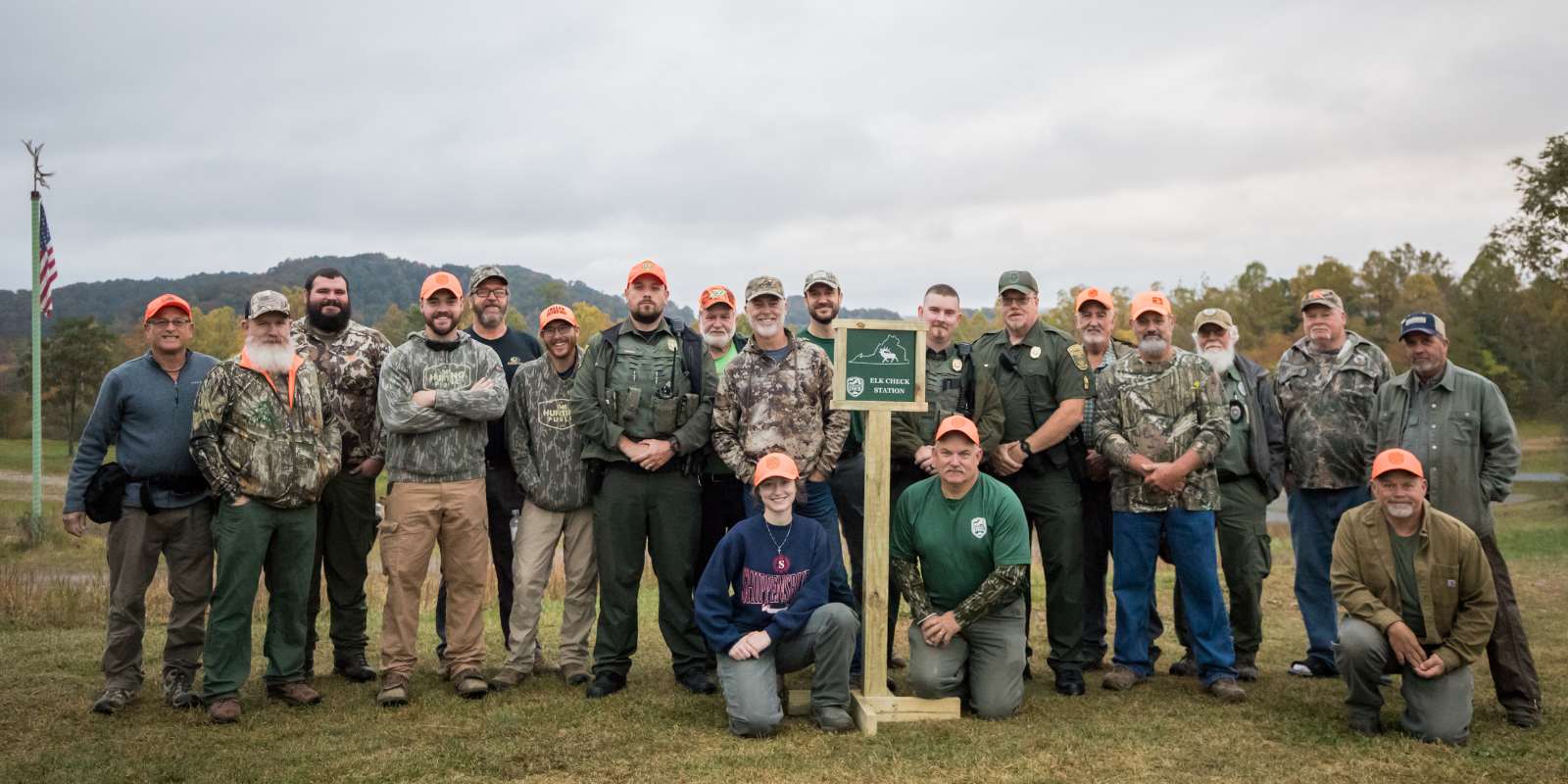
DWR staff along with some of the landowners and volunteers at the elk check station on opening morning of the hunt. Photo by Meghan Marchetti/DWR
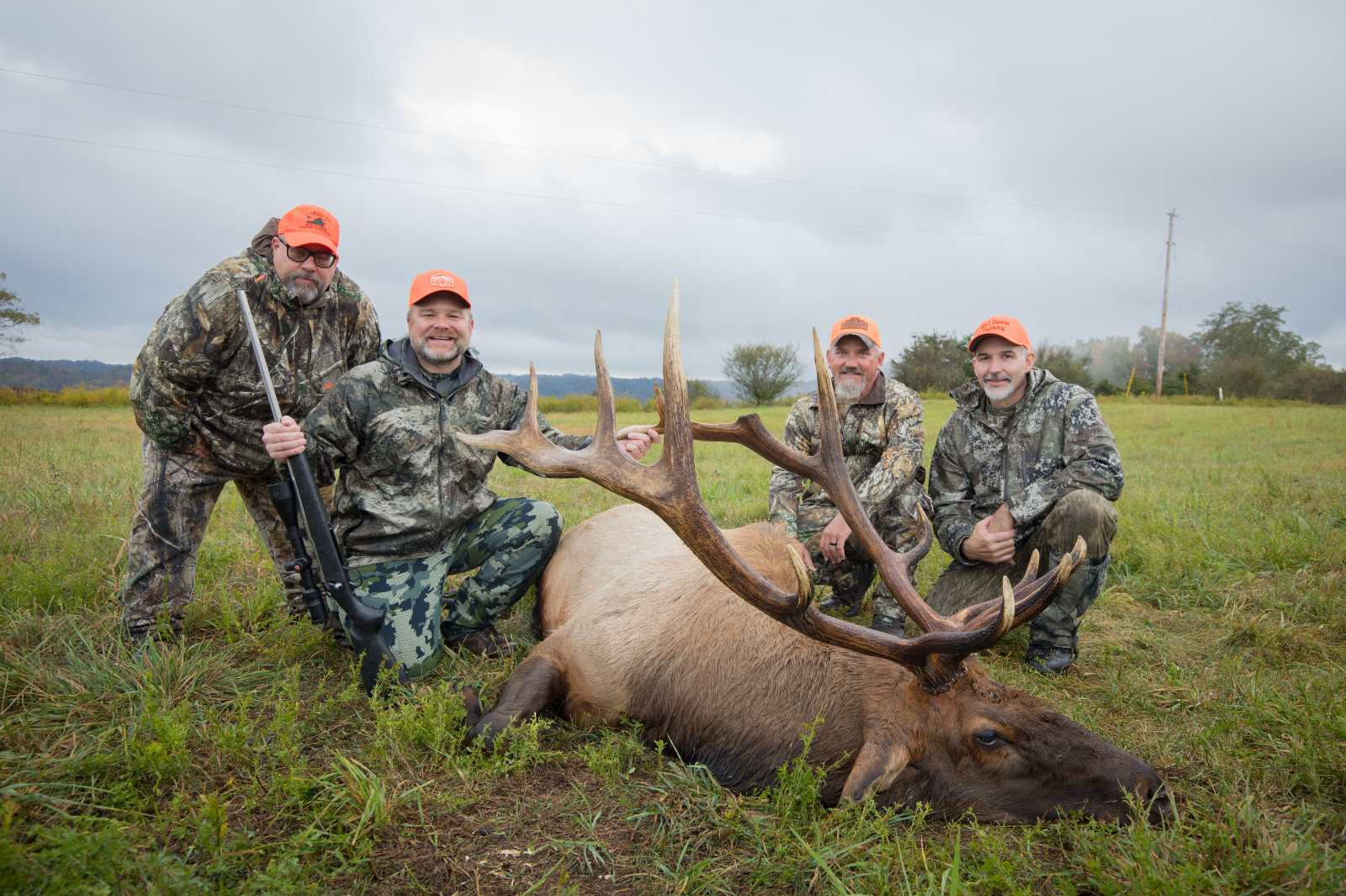
A 7×7 bull weighed 745 pounds live weight and was part of Virginia’s elk restoration. A small metal ear tag, not visible to the hunter until after harvest, indicated he was brought to Buchanan County from Kentucky as a 2-year old in 2014, making him 11.5 years old when he was killed. Photo by Meghan Marchetti/DWR
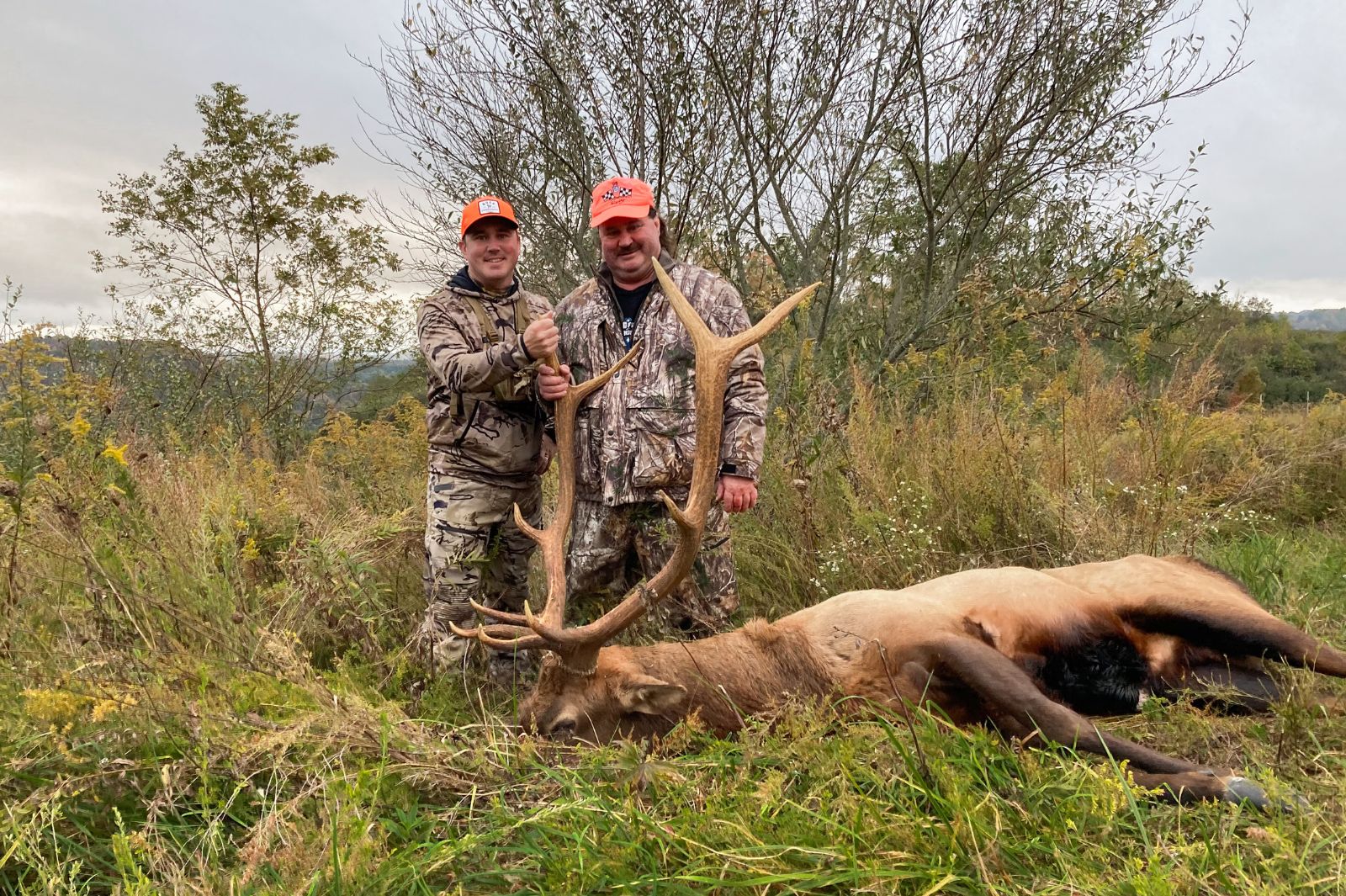
A 5×5 bull weighing 689 pounds live weight was 3.5+ years of age. An exact age will be determined via cementum annuli analysis.
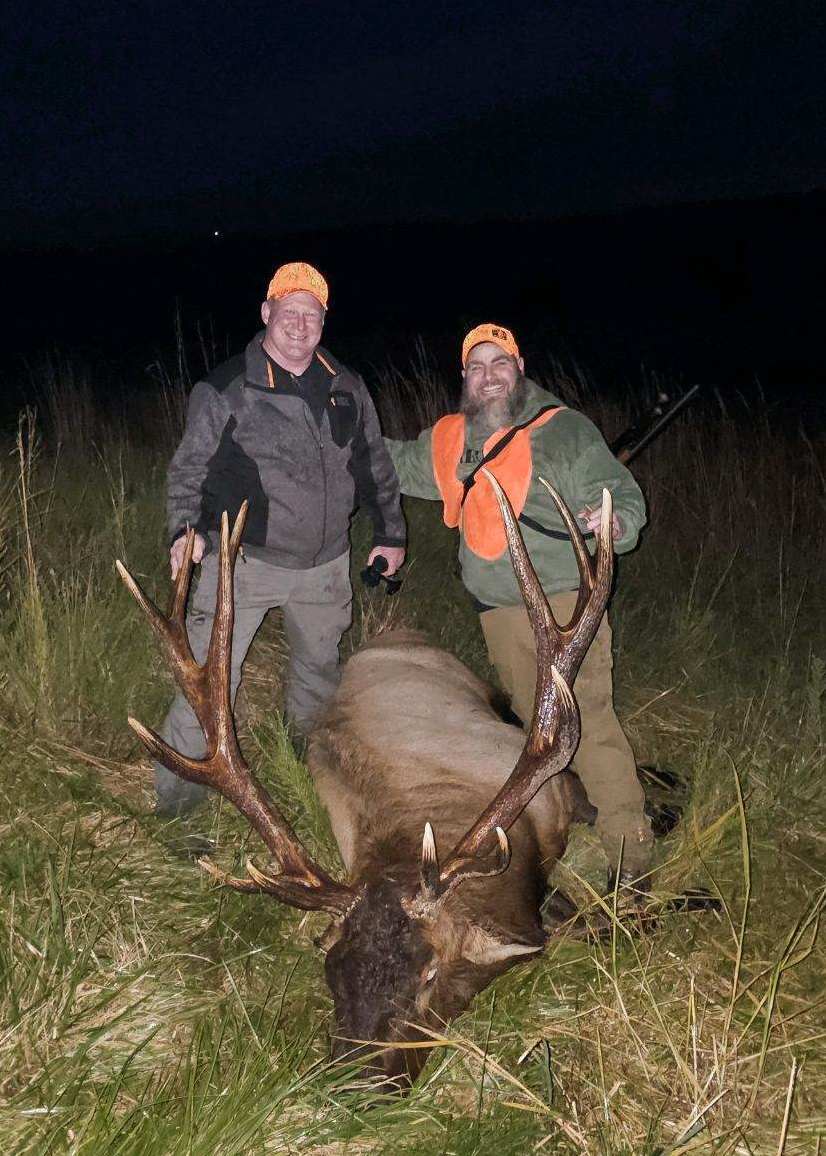
An 8×8 bull weighed 755 pounds live weight and was 3.5+ years of age. An exact age will be determined via cementum annuli analysis.
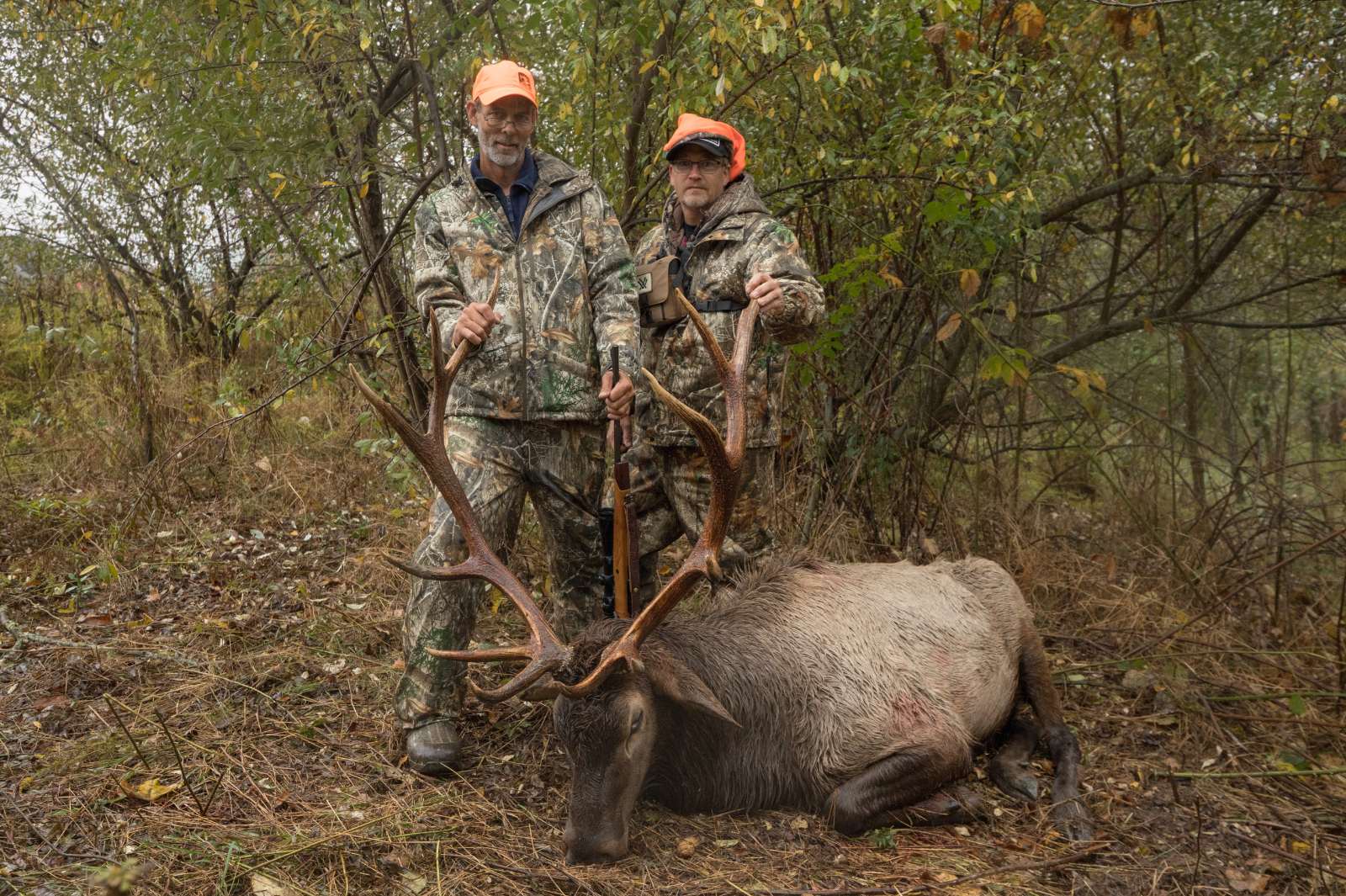
A 6×6 bull weighed 715 pounds live weight and was 3.5+ years of age. An exact age will be determined via cementum annuli analysis.
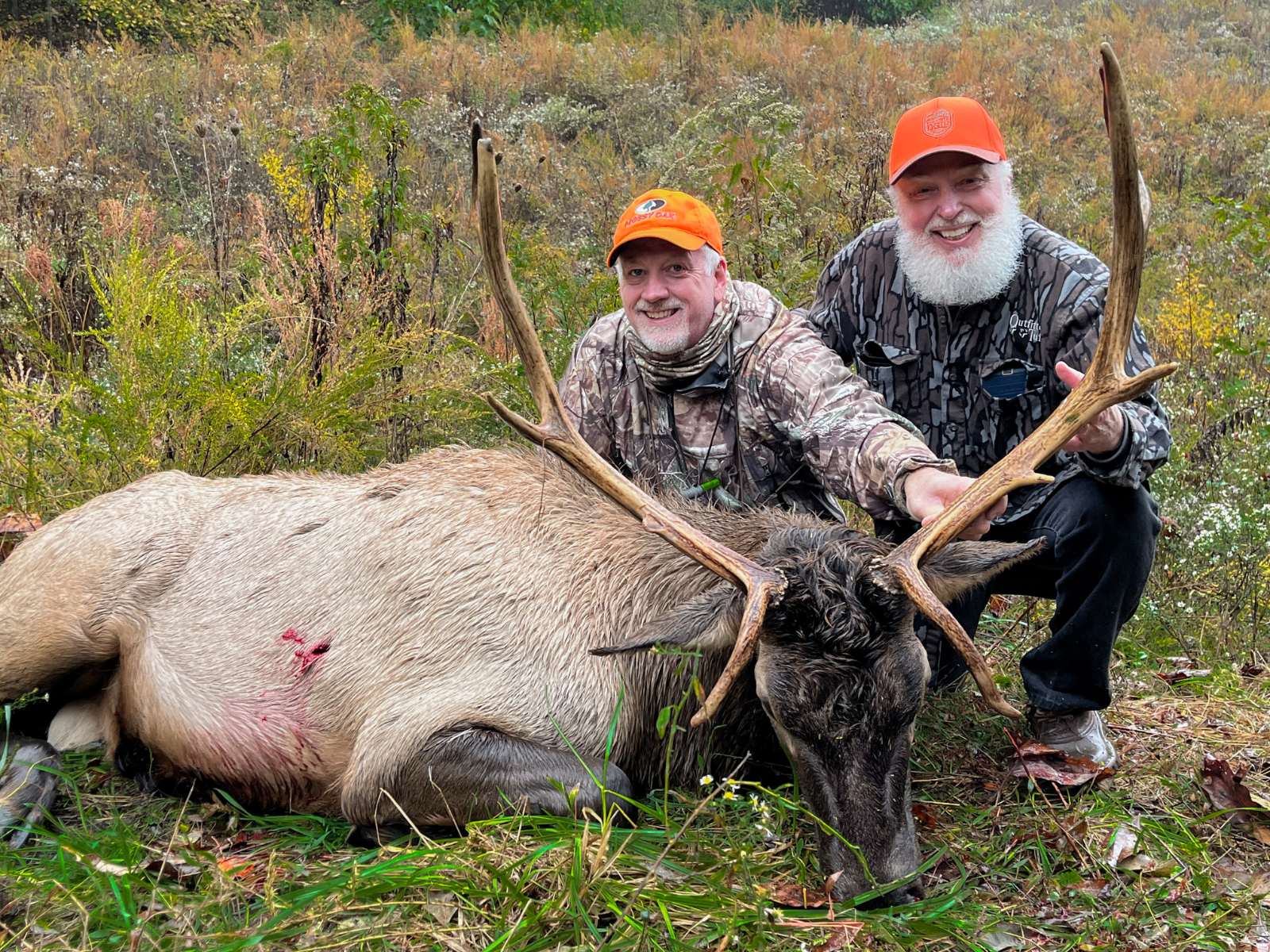
A 5×5 bull weighed 526 pounds live weight and was 2.5 years of age.
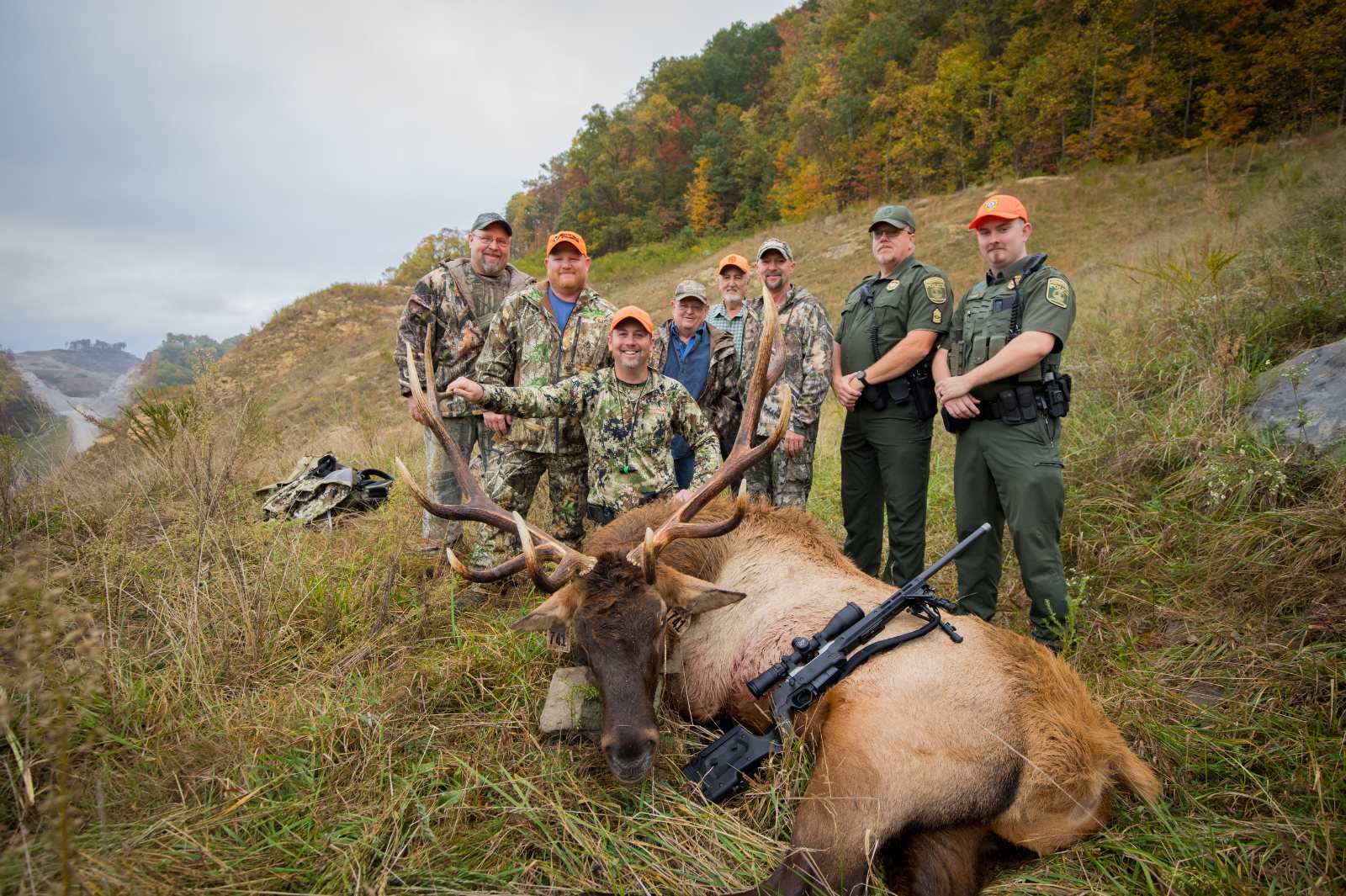
A 6×6 bull weighed 709 pounds live weight and was 3.5+ years of age. An exact age will be determined via cementum annuli analysis. Cattle tags were attached to the bull’s ears by DWR staff in January 2023 when the bull was chemically immobilized to be freed from a batting cage in which his antlers were tangled. Photo by Meghan Marchetti/DWR


